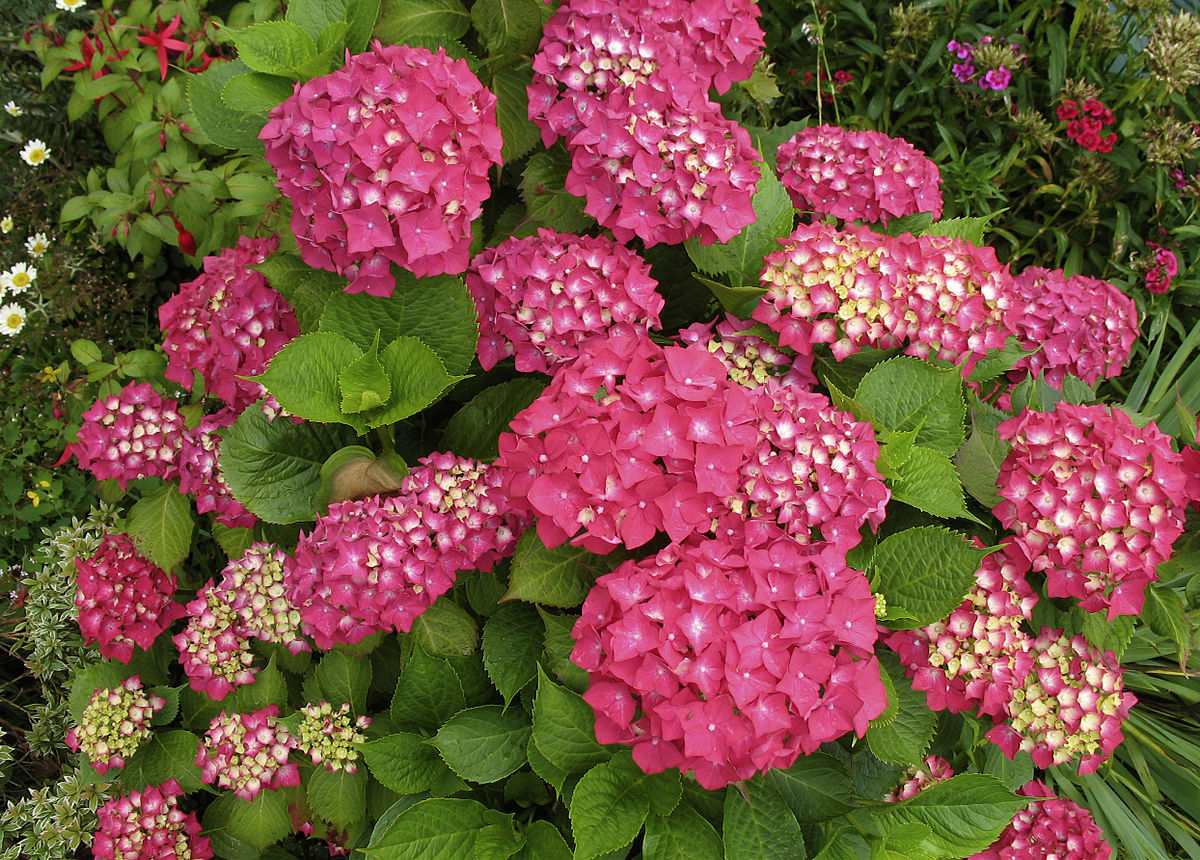H Macrophylla: The Giant Magnolia That Will
H Macrophylla: The Giant Magnolia That Will
The bigleaf magnolia (Magnolia macrophylla) is a deciduous tree native to the southeastern United States. It is the largest magnolia species in North America, with leaves that can grow up to 3 feet long and flowers that can reach 14 inches in diameter.
The bigleaf magnolia is a truly stunning tree. Its large, lobed leaves are a deep green color, and its flowers are creamy white with a hint of pink. The flowers are fragrant and bloom in the spring, before the leaves emerge.
The bigleaf magnolia is a relatively slow-growing tree, but it can eventually reach heights of 60 feet or more. It is hardy in USDA zones 6-9, and it prefers full sun to partial shade. The tree is also tolerant of a variety of soil types, but it does best in moist, well-drained soil.
The bigleaf magnolia is a popular ornamental tree, and it is often planted in parks, gardens, and along streets. It is also a good choice for home landscapes, as it can provide shade and beauty for many years.
Main Content
Growing and Caring for H Macrophylla
The bigleaf magnolia is a relatively easy tree to grow, but it does have some specific requirements. The tree needs full sun to partial shade, and it prefers moist, well-drained soil. The bigleaf magnolia is also tolerant of a variety of soil pH levels, but it does best in slightly acidic soil.
The tree is not very drought-tolerant, so it is important to water it regularly during the summer months. The bigleaf magnolia is also susceptible to wind damage, so it is best to plant it in a sheltered location.
Propagation
The bigleaf magnolia can be propagated from seed, but it is a slow process. The seeds need to be stratified for several months before they will germinate. The tree can also be propagated from cuttings, but this is a more difficult process.
Pests and Diseases
The bigleaf magnolia is relatively resistant to pests and diseases. However, the tree can be susceptible to aphids, scale insects, and leaf spot. If the tree is infected with a pest or disease, it is important to treat it immediately to prevent the problem from spreading.
Tips for Growing a Healthy H Macrophylla
- Plant the tree in full sun to partial shade.
- Water the tree regularly during the summer months.
- Fertilize the tree in the spring and fall.
- Mulch around the tree to help retain moisture and suppress weeds.
- Prune the tree as needed to maintain its shape.
Conclusion
The bigleaf magnolia is a beautiful and majestic tree that can add a touch of elegance to any landscape. If you are looking for a tree that is easy to grow and care for, the bigleaf magnolia is a great choice.
If you're interested in learning more about h macrophylla, I recommend visiting the . This website is a great resource for information about this beautiful flower, including its history, cultivation, and care. You'll also find a wealth of photos and illustrations, as well as links to other helpful resources.
I particularly enjoyed the section on the different varieties of h macrophylla. There are so many to choose from, each with its own unique characteristics. I'm already planning my next garden based on the inspiration I found on this website!
So if you're looking for more information about h macrophylla, I highly recommend visiting . You won't be disappointed.
FAQ of h macrophylla
1. What is H. macrophylla?
H. macrophylla, also known as the giant hydrangea, is a large, deciduous shrub or small tree that is native to eastern Asia. It can grow up to 30 feet tall and wide, and its leaves are large and heart-shaped. H. macrophylla blooms in the summer, and its flowers can be white, pink, blue, or purple.
2. How do I care for H. macrophylla?
H. macrophylla is a relatively easy plant to care for. It prefers full sun to partial shade, and it needs moist, well-drained soil. It is also important to fertilize H. macrophylla regularly, especially during the growing season.
3. What are some common problems with H. macrophylla?
The most common problems with H. macrophylla are pests and diseases. Aphids, scale insects, and spider mites are all common pests that can attack H. macrophylla. Diseases such as leaf spot and powdery mildew can also be a problem.
4. How do I propagate H. macrophylla?
H. macrophylla can be propagated by seed, but it is more commonly propagated by cuttings. Cuttings should be taken in the spring or summer, and they should be rooted in a moist, well-drained medium.
5. What are some tips for displaying H. macrophylla?
H. macrophylla is a beautiful plant that can be used in a variety of settings. It can be planted in a garden, in a container, or even in a greenhouse. H. macrophylla is also a popular cut flower.
Image of h macrophylla
5 different images of "h macrophylla" from Pinterest:
- Image 1: A close-up of a h macrophylla leaf, showing the distinctive large, heart-shaped leaves.

- Image 2: A full plant of h macrophylla, showing the large, lush leaves and the cascading vines.

- Image 3: A h macrophylla flower, showing the delicate white blooms.

- Image 4: A h macrophylla plant in a hanging basket, showing how the cascading vines can be used to create a beautiful and eye-catching display.

- Image 5: A h macrophylla plant in a terrarium, showing how this plant can thrive in a humid environment.

Post a Comment for "H Macrophylla: The Giant Magnolia That Will"